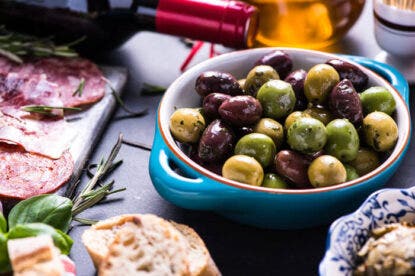Mission Impossible, Made Possible
Seventeen years ago, it seemed highly unlikely that the United States would ever become a wine-drinking nation. What caused this dramatic turnaround?
In the May/June 1990 issue of Wine Enthusiast, we ran a story entitled, “Can America Become A Wine-Drinking Nation?” We asked that question of 37 leaders of the wine trade. Robert Mondavi, Robert Parker, Hugh Johnson, Jess Jackson and Don Sebastiani are just some of the names of the participants.
The vast majority of their responses were pessimistic; some said it would never happen, others said it would take several lifetimes. A few respondents allowed that it might happen someday, but only if America’s fundamental culture changed. What they were focusing on wasn’t just the fact that, in 1990, Americans were primarily soda, beer and cocktail drinkers. It was far more than that—there was a neo-Prohibitionist attitude in the air at the time. Our respondents said it would take a miracle—or at least, many decades and many hundreds of millions of marketing dollars—to induce Americans to consume and appreciate wine.
But the situation changed suddenly and dramatically in 1991, when television’s 60 Minutes broadcast a segment on the French Paradox. The health benefits of wine became widely known (and new ones continue to be discovered to this day).
At the same time, the tireless efforts of men of vision such as Ernest and Julio Gallo, Robert Mondavi and Jess Jackson began to bear fruit, and fine wine merged with a healthy lifestyle. Other factors: the boom in America’s culinary scene, both in restaurants and at home; wine’s identification—not only with food, but as a food; the explosion in wine production globally, which has lowered prices overall, vastly increased the quality of everyday wines; and the rise of wine education, which has trickled down to retailers and restaurateurs, who have created in-store tastings and vigorous by-the-glass programs.
In short, much has happened in 17 years. Certainly, a milestone was reached in 2006, when wine sales surpassed beer sales in this country. And another might be reached in 2008: It is predicted that the United States will surpass both France and Italy to become the world’s largest wine-consuming nation. In 1990, the editors of Wine Enthusiast Magazine were optimistic about the increased role that wine would play in the American lifestyle, and our optimism has been justified.
This is not intended to be a swipe at the people who participated in the survey. How many of us can accurately predict the future in this fast-changing world? Even the facts of the present are often obscured. For example: If we did a survey of our readers, asking them to rank where they think Merlot is in terms of sales, many would probably say that it’s declined and at the bottom. But the fact is, Merlot is the number one red wine in this country in terms of sales, and has been for a long time. Has it lost some of its momentum over the years, even before it took that notorious cinematic slap? Yes. Is it losing ground in the upper tiers to Cabernet Sauvignon? Yes. But Merlot remains a dominant red wine, and a great food wine. In this issue, our editors guide you to the best bottles in the best regions.
Our focus on Merlot brings us full circle, because it was Merlot that helped pave the way for America’s wine renaissance. Wine newcomers who found Cabernet too tannic and overwhelming discovered Merlot: more approachable, pronounceable, fresh and able to be enjoyed young.
Also in this issue Susan Gough Henly takes us on a tour of wine regions within reach of Adelaide, the lively city in South Australia. Using Adelaide as a base, wine tourists can visit Barossa, McLaren Vale and Adelaide Hills, all of them offering a great mix of wineries, from the big producers with the familiar names to the boutiques.
Also in this issue, European editor Roger Voss analyzes the red wines of Burgundy 2004. Voss believes that the 2004s have been underrated, and that some bargains can be found, if the term “bargain” can ever be applied to Burgundy.
This may be the Age of Pinot Noir, but let’s raise a glass of Merlot and toast to Merlot. It helped propel America to officially join the league of nations that embrace wine as part of a healthy, full lifestyle.
Cheers!

Have a comment on this month’s Enthusiast’s Corner? Email Adam Strum
Last Updated: May 4, 2023














